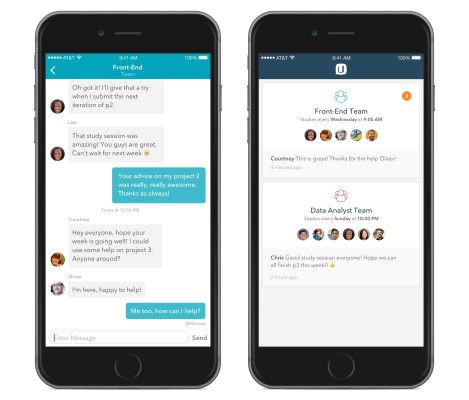Layer, the former TechCrunch Disrupt winner that makes it possible for developers to add rich messaging capabilities to their apps without having to build their own infrastructure, has been steadily growing since its debut back on the Disrupt stage two yeas ago. Today, the company reaches over 10,000 developers, including 200 paying customers who use its platform and tools to add features including messaging, voice and video into their applications without having to build these features from the ground-up.
Today, Layer is expanding its product again, with the introduction of Layer’s webhooks service.
The company explains via blog post that, while the Layer Platform API is used to input data into conversations, webhooks can serve as an output. “As a developer, you define which events you want to be notified of and Layer will trigger a request to a URL you define, along with a JSON payload containing additional event information,” the post states.
For example, a dating app maker could use the new service to build a bot that prompted app users to chat by injecting conversation starters into their app’s messaging area, by monitoring for specific activity that would then trigger an automated message to appear.
Other developers could use new functionality to monitor for specific types of content, such as for spam filtering, profanity or content filtering, or it could look for keywords and commands input by users. The service could also interoperate with external messaging systems like email or SMS – the latter which should prove useful for the growing number of companies launching “app-less” SMS-based concierge services that let users chat with virtual or human assistants over text messaging.
The additional feature makes sense at a time when users are increasingly interacting with businesses by way of chat.
Notes Layer co-founder and CEO Ron Palmeri, “messaging is starting to replace email, telephone and other forms of interactions between companies and their customers,” he says. “And the type of things that get passed are not just text.” Instead, businesses can use messaging interfaces to share information related to inventory or returns, take payment info from customers, remind users of upcoming events, and more.
This ability to chat with an app’s end users through a messaging interface also works as a new and more personal form of customer service. “Companies that want to own their relationship with their customer don’t want an intermediary,” Palmeri adds. “This is an incredibly rich way to interact with their customer,” he says of Layer’s expanded capabilities.
Since the company’s debut in 2013 on TechCrunch Disrupt’s stage, a number of mobile app developers as well as those building for the web, have turned to Layer. The company reports 35 percent month-over-month growth in paying customers and a 50 percent increase in messaging volume growth. And in the past quarter, Layer has seen 450 percent message volume growth.
In the past 30 days alone, Layer has seen 1,000 active developers building using its platform, and says that its support satisfaction rate (based on developers’ ratings support after a support session wraps) is over 90 percent.
In addition, while 40 percent of Layer’s customers are U.S.-based, the remaining developers are from elsewhere around the world, including the U.S., Asia, Europe, and Africa.
Among its customer base, Layer sees a variety of use cases. For example, in addition to social apps like the sports communities Onefootball or Mitoo, other customers include San Francisco bus service Chariot; edtech companies like Udacity and India’s PaGaLGuy; GoButler; Nordstrom-owned Trunk Club; Forbes and Tinder’s 30 Under 30 app; Barclays Bank; job apps like those from AngelList, Jobr, and Switch; Photobucket; dozens of dating apps like Hinge or India’s Woo; and others.
Layer’s webhooks service will launch later this fall. In the meantime, developers can sign up for early access here.
Meanwhile, Atlas, a user interface framework announced earlier this year which offers source code that developers can customize to add iMessage-like messaging components to their apps, will be generally available to Android developers in a few weeks.
